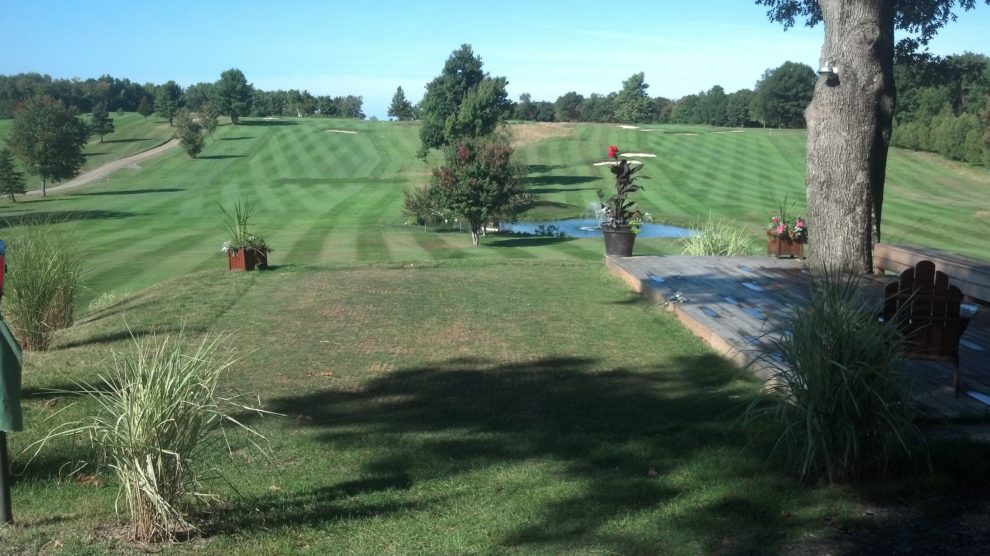So I received this email recently:
Dear Jay,
My job has me driving all across New York State, and occasionally when I’m done working I can squeeze in a round somewhere. But I’m having trouble finding good public courses on the road between Rochester and NYC. Can you help a sista out? Where can I get a quick round in at a good price?
Nicole in Brewerton
Dear Nicole,
Far be it from me to leave a sista hanging; that’s just wrong.
You’re right – pickings can be slim for public courses along I-90 from Rochester to Albany and I-87 from Albany to either Lake Placid or Westchester. Blarney Stone Casino is no good because Atunyote is overpriced and under-designed, Kaluhyut is overpriced and too penal, and Shenandoah underwhelms and has some clear architectural mistakes made for the sole reason of making you look at the casino while playing golf shots. Your best hopes are, of course, Leatherstocking G.C. in Cooperstown and Links at Union Vale near Poughkeepsie. Still, there are some interesting things happening architecturally and creatively…
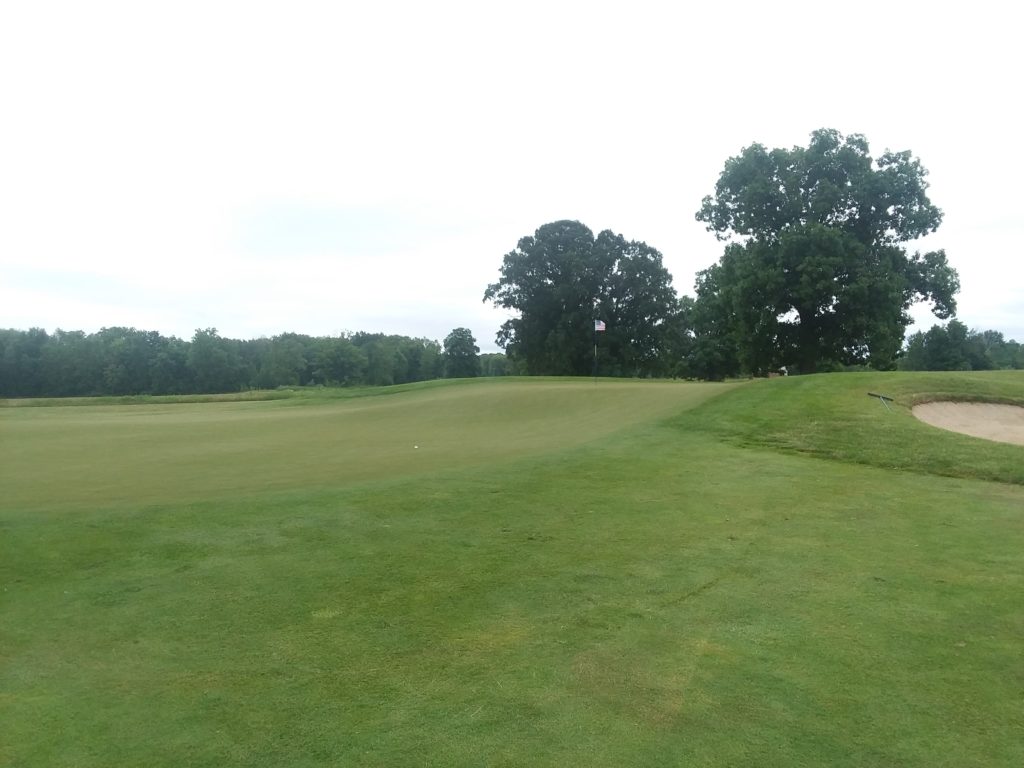
Timber Banks Golf Club and Marina, Baldwinsville, N.Y.
“The greens there are preposterous!” raged one of my golf industry colleagues whose reputation is normally pristine when it comes to reliability. Well on this one occasion – and only occasion I can recall – I have to say that the call on the field is reversed. The greens at Timber Banks are magnificent.
The course bills itself as “the only Nicklaus design in central New York.” That should not be their selling point, as that slogan caters to the wrong demographic. Instead of the casual golfer, they have the opportunity to cater to the ardent, well-traveled loyal golfer – a national audience as well as local.
Nicklaus Design is known more for its high-end private clubs rather than public designs. Either way, Nicklaus Design is international – so large that Jack isn’t the person routing the course and designing the individual holes and green complexes. He flies in to check the work. Jack leaves the heavy lifting to lead associates such as Jim Lipe, John Sanford or even Jack’s son, Gary.
At Timber Banks, you get Troy Vincent, who obviously has outstanding taste in golf course architecture, because many of Timber Banks’s greens draw their strategic principles directly from Golden Age courses designed by C.B. Macdonald, Seth Raynor, and Charles “Steamshovel” Banks. From tee to green Timber Banks is nothing you haven’t seen before anywhere else – there isn’t much horizontal sweep to fairways creating multiple angles, and the relatively flat piece of property doesn’t have much vertical movement either, but the greens make for a fascinating day practicing your iron play and your short game. Both better be sharp, because the greens have multiple sections, each well protected by hazards or fierce internal contours.
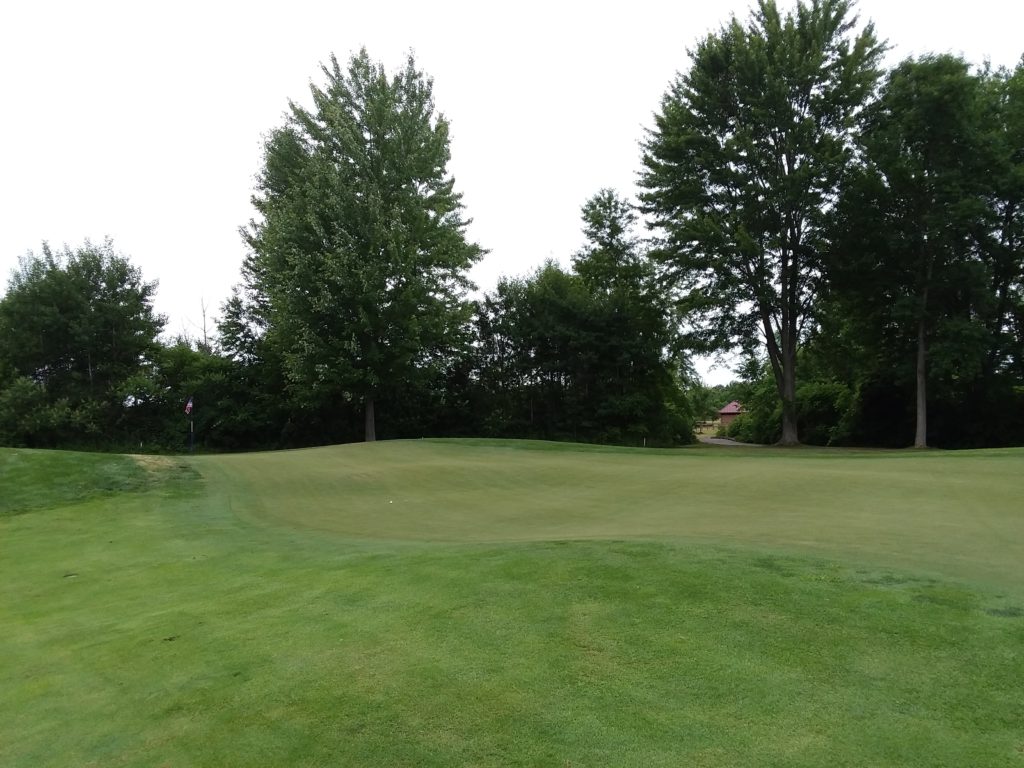
On the front nine alone you will find a soft version of a Biarritz green at the par-3 fourth, a puckishly fun Knoll hole at the par-4 sixth, a double plateau green at the par-3 eighth and a take-your-breath-away thumbprint in the ninth green resulting in a gorgeous Maiden feature. And if that’s not enough, the back quadrant falls away from the player into a shaved chipping area.
The adventure continues all along the back with one excellent green complex after another. Highlights include the the stretch of 12-14. At the 12th, the green is protected by Shinnecock Hills-like swales. The 13th features an infinity shaped two-tiered green, and the dangerously narrow par-5 14th green sits atop a knob that falls away on all sides.
Easily the best greens in Syracuse public golf area by an order of magnitude, the course is actually priced quite reasonably: $49-$69 during prime hours, $39-$49 at twilight, cart included. (You’ll need it – there are some interminable walks between greens and tees.)
Copake Country Club, Lake Copake, N.Y.
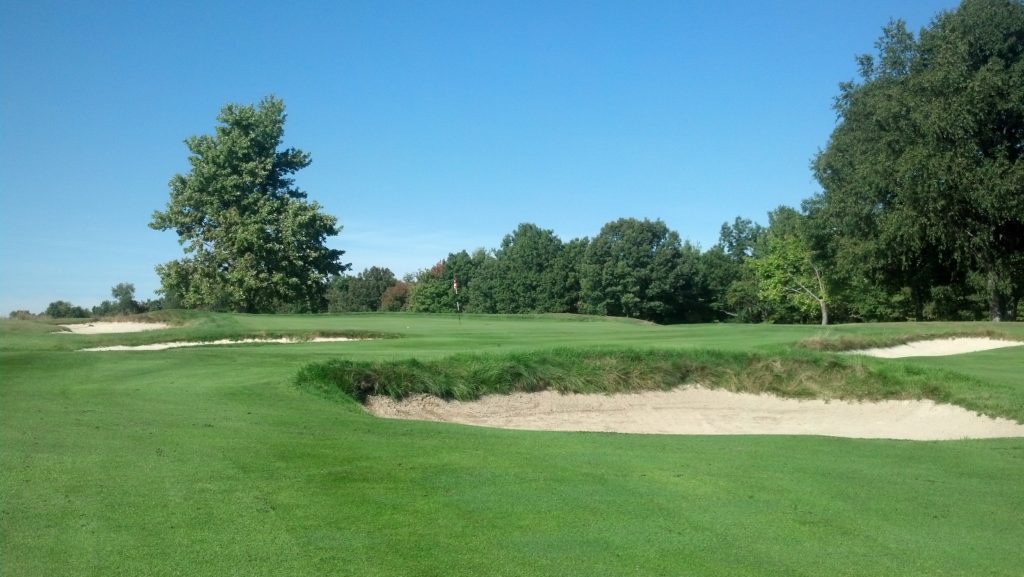
You can’t help but like what golf course architect Mark Wise and head superintendent Mark Anderson are doing at Copake. The course is exactly what we need more of in golf: shorter courses that don’t don’t take forever to play, but have interesting green complexes and feature a reasonable price point for public players.
Copake scores on all counts. Topping out at 6,300 yards, you can spin around in 3 hours, hit every club in your bag and have a ton of fun trying not to have your pitch shots roll back to your feet or have putts roll off the false front or sides of greens.
“It’s like a little Shinnecock,” gushed public golfer Sean Stewart. “In high summer, when they want, they can ramp up the green speeds, and you have to be exceptionally careful not to blow one back down the fairway or into a swale. It defends par well without needing 7,700 yards or ponds everywhere.”
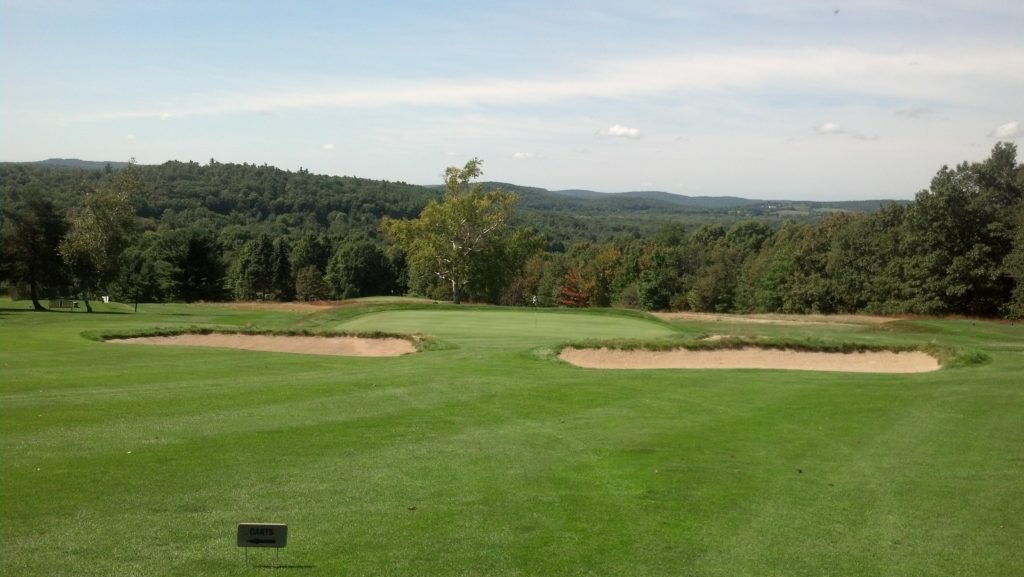
Though short on the card, there is excellent vertical movement in the earth as fairways climb dizzyingly uphill, or cascade majestically downhill, with stunning views of the crystalline lake. Some fairways, such as 15, are tilted sharply, requiring golfers to shape their shots. And of course, the greens – some crowned, some canted, and many featuring false sides or fronts, put a premium on precision with iron shots and wedge play.
Best of all, you can play for around $30; it’s perhaps the best bargain between Albany and New York City. JUst 45 minutes from Albany, it’s perfect for a quick round on your way down to the City from points north and east.

